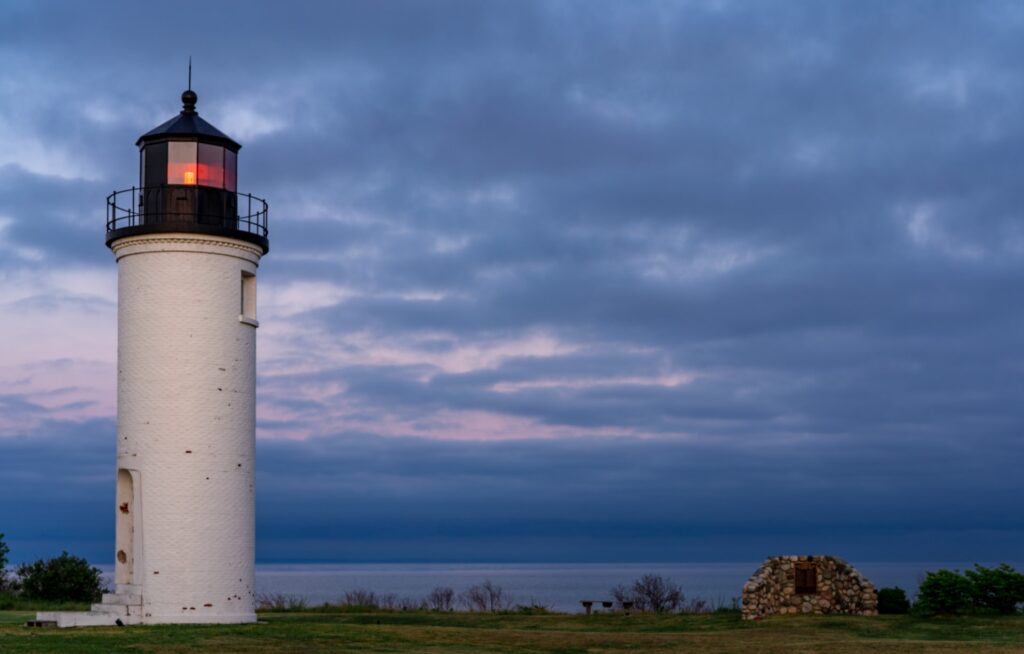
Beaver Island Up North
Beaver Island is located 32 miles offshore of Charlevoix, Michigan and is the largest island in Lake Michigan.
Northern Michigan Lighthouses -Charlevoix South Pier Lighthouse
Northern Michigan Guides Photo
Lighthouses are a navigational tool for mariners, a point of reference in travel on and off land, and a thing of beauty and history. In Northern Michigan, there are many working lighthouses that assist boaters. And here you’ll find historic lighthouses where lighthouses keepers once lived and worked that have been preserved, restored and are open to visitors.
From the Straits of Mackinac to Charlevoix, this part of Up North Michigan has a variety of lighthouses. Many of these elegant structures were built in the 1800s and are now maintained by volunteers and historical organizations.
Tour historic lighthouses and get a glimpse of what life was like for the lighthouse keeper and his family. The keeper at McGulpin Point moved his family to nearby Mackinaw City in the winter months so his children could go to school but he traveled back to the lighthouse once a week on snowshoes to report on the lake and ice conditions. See the living quarters where the keeper’s families raised children and view Lake Michigan from the top of the elegant towers. Lake Michigan can be calm and glass-like or wild and turbulent just as it was in the lighthouse keeper’s day. Some things don’t change.
Two Northern Michigan Lighthouses, McGulpin Point Lighthouse and Old Mackinac Point Lighthouse, are open for tours. Just down the hillside from McGulpin Point Lighthouse is McGulpin Rock first noted by French Explorers in 1615. Other working Northern Michigan Lighthouses can be seen from the water. In Harbor Springs, the Little Traverse Lighthouse can be seen from the water and from the shoreline around Little Traverse Bay.
Still gracing the Northern Michigan waters as they have for more than a century, these lighthouses are a special Up North treat.
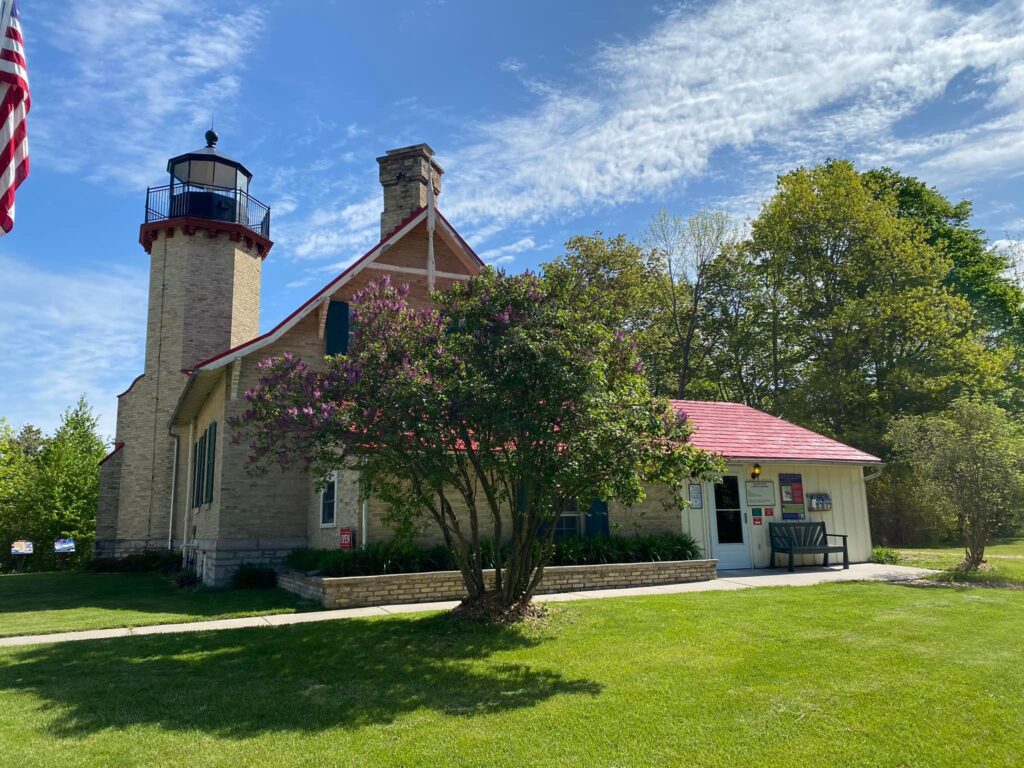
First lit in 1869, the McGulpin Point Lighthouse was a pivotal navigational tool for ships on Lake Michigan. The lighthouse marked the southwestern edge of the Straits of Mackinac entrance and is located on a promontory just west of Mackinaw City in Northern Michigan.
The point of land where the McGulpin Point Lighthouse is located was first inhabited by the Native Americans. John McAlpin and his Native American wife arrived at the point in the 1760s. The 640-acre property was the first one deeded in Emmet County in 1811 and was in the name of Patrick McGulpin, son of the McAlpins. By the early 1850s, it was determined that a lighthouse was needed on this spot in the Straits of Mackinac and Congress authorized it to be built in 1854.
In 1892, another lighthouse was built two miles east of McGulpin’s Point on Mackinac Point and was visible by all ships entering the Straits from both the east and the west. The McGulpin Point Lighthouse was visible only for ships entering the Straits of Mackinac from the west so in 1906, just 37 years after going into service, the McGulpin Point Lighthouse was retired.
The architectural style of the lighthouse is octagonal and it is built from yellow brick. The lighthouse was one of five mirror image lighthouses designed in Norman Gothic style and the tower and keeper’s dwelling were built with cream city brick that came from Milwaukee.
The building included a full basement which served as an oil storage room and a cast iron, spiral stairway connected the basement to the tower. Visitors can climb the spiral staircase to the top of the tower where there is a spectacular view of the Straits of Mackinac and the Mackinac Bridge.
The longest serving keeper of the Lighthouse was the Davenport family who served from 1879 to the closing in 1906. The family lived at the Lighthouse during the navigational season and in nearby Mackinaw City during the winter months.
In 2008, the Emmet County Commissioners voted to purchase the property from the Peppler family. Just a year later, the Commissioners purchased property next to the Lighthouse for parking. Restoration work has included a new light in the tower, interpretative displays, and a cell phone tour. A new replica lantern was added atop the tower and lit for the first time at a rededication ceremony in 2009.
The summer of 2010 was the first full summer for visitors and more than 10,000 people from through the U.S. and Canada came to see the beautiful lighthouse in an amazing location overlooking the Straits of Mackinac.
The McGulpin Point Lighthouse is listed on the official “Light List” maintained by the U.S. Department of Homeland Security and the U.S. Coast Guard for the first time since the decommissioning in 1906. Special events are planned throughout the year although the Lighthouse closes for visitors in early November.
McGulpin Point Lighthouse is located approximately 2 miles west of Mackinaw City. From Mackinaw City, drive west on Central Avenue which becomes C 81 until it ends at Headlands Drive. Turn north (right) on Headlands Drive and the lighthouse is on the right-hand side (look for the signs).
Typical Hours: 10am-6pm daily May through September. Hours reduced in October with the lighthouse only open on Friday, Saturday, and Sunday from 10am-6pm. Stay tuned for information on 2025.
For more information, visit mcgulpinpoint.org.
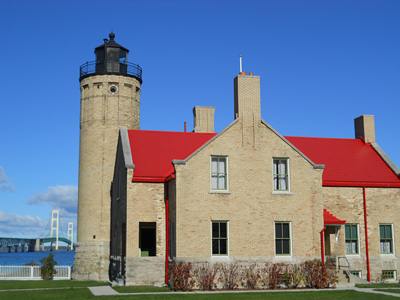
The majestic Straits of Mackinac and the Mackinac Bridge are the backdrop for the Old Mackinac Point Lighthouse, a historic lighthouse in Mackinaw City, Michigan. This Northern Michigan landmark was built in 1892 as a sentinel for the vessels entering the Straits of Mackinac from both the east and the west.
The Straits of Mackinac were, and are still today, critical to navigation. The McGulpin Point Lighthouse was put into action in 1869 as the lighthouse serving vessels entering the Straits from the West. But a spot at the top of the lower peninsula overlooking the Straits of Mackinac allowed sight to vessels from both directions and Congress authorized a new lighthouse to be built.
In 1890, a fog signal was placed at the spot as foggy conditions on the Straits was a navigational problem. The fog signal had its own building with twin steam boilers. The first year it was in action, 1890, it operated more than 300 hours using 10 tons of coal and 18 cords of wood. Two years later, the Mackinac Point Lighthouse was put into action with a fourth order fresnal lens.
The tower and attached keeper’s quarters were constructed with cream city brick, like the McGulpin Point Lighthouse, with Indiana limestone trim. The building housing the fog signal was demolished and a brick building 50′ away from the lighthouse was constructed for the boilers.
When the Mackinac Bridge opened in 1957, its twin towers became the navigational marker for the Straits of Mackinac and the Mackinac Point Lighthouse was put out of business. The property was purchased in 1960 by the Mackinac State Historic Parks and was used as a maritime museum from 1972-1988. The fog signal building reopened as a visitors center in 2000 and the restored lighthouse opened in 2004.
Visitors to adjacent Fort Michilimackinac can tour the Mackinac Point Lighthouse, with interpreters in period costume, climb the 51 steps to the lantern room and take in the spectacular view of the Straits, and climb even higher up the 13-rung ladder through the narrow opening to where the fresnel lens once shown brightly.
Stay tuned for information on open hours in 2025.
For more information, visit mackinacparks.org.
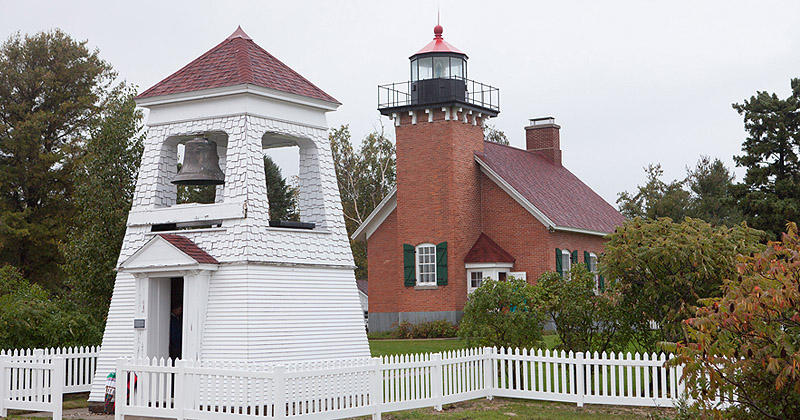
The Little Traverse Lighthouse, also called the Harbor Springs Lighthouse or Harbor Point Lighthouse, was first lit in 1884 by lighthouse keeper, Elizabeth Whitney Williams sending light 13 miles across the bay and into Lake Michigan. The lighthouse design is identical to one built in 1883 in Door County, Wisconsin.
The two-story brick building with an attached, square tower was an essential navigational tool for vessels on Lake Michigan. The community of Harbor Springs rallied for several years to get a lighthouse due to increasing boat traffic coming into Little Traverse Bay and Northern Michigan.
The first lighthouse keeper for the Little Traverse Lighthouse was 42-year-old Elizabeth Whitney Williams. She transferred from a 12-year stint as lighthouse keeper on Beaver Island to Harbor Point.
The 40′ tower’s cast-iron lantern room is 10-sided, has a red roof, and a fourth order fresnel lens. A rare, 18′ free standing fog bell tower stands next to the lighthouse and was built in 1896 to serve the growing number of pleasure boats coming into the bay and harbor.
The 3 1/2 acre property that the lighthouse sits on was purchased by the U.S. Government from the Harbor Point Association in 1883. Also on the property is a summer kitchen attached by a portico and a brick locker. When the U.S. Coast Guard decommissioned the Little Traverse Lighthouse in 1963, the property was sold back to the Harbor Point Association.
When the Little Traverse Lighthouse was decommissioned, the US Coast Guard erected a 41′ white steel skeleton tower. The light on the tower is visible for 14 miles.
The Little Traverse Lighthouse is not available to the public and can be seen only from the water. Occasionally, the Harbor Springs Historical Society hosts a fundraising tour of the lighthouse.
In addition to the lighthouses detailed above, there are many working lighthouses on Lake Michigan. Unlike the historic ones built with a keeper’s quarters attached to a tower, these lighthouses are just towers. Many are located off shore and not accessible accept by boat.
Waugoshance Point is a brick lighthouse with a birdcage-style apparatus around the light that was built in 1851. It is located straight west of Mackinaw City leading into the Straits of Mackinac and west of McGulpin Point Lighthouse. It was deactivated in 1910.
Grays Reef Lighthouse is a US Coast Guard lighthouse built in 1937. It is located six miles offshore off Waugoshance Point and marks the outside edge of the Grays Reef. The original fresnel lens can be seen at the Harsha House, Charlevoix.
Skillagalee (Ile Aux Galets) Lighthouse, nicknamed Skilly, was built in 1851. It was once a large tower with keeper’s quarters but only the working tower remains. Located six miles west of Cross Village, it marks the ever growing Skillagalee island–becoming bigger as lake level’s drop.
The Charlevoix South Pier was built in 1911 of wood and then replaced with a steel structure in 1948. The Charlevoix Historical Society maintains this still active light.

Beaver Island is located 32 miles offshore of Charlevoix, Michigan and is the largest island in Lake Michigan.

Fisherman’s Island State Park has more than 2,600 acres and miles of gorgeous Lake Michigan beach and is located just south of Charlevoix.
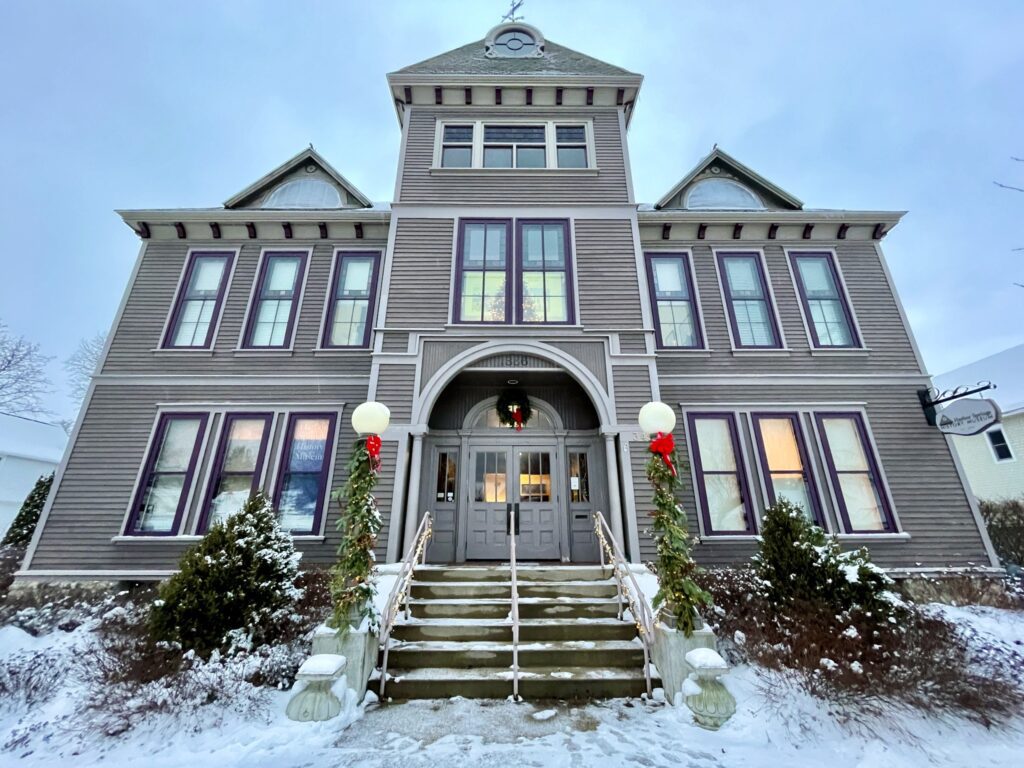
The Harbor Springs History Museum offers a unique look at the history of the community, starting with the first Catholic missionaries.

It’s just for kids–a fishing pond in Petoskey! Kids can throw a line in this one acre pond stocked with trout.
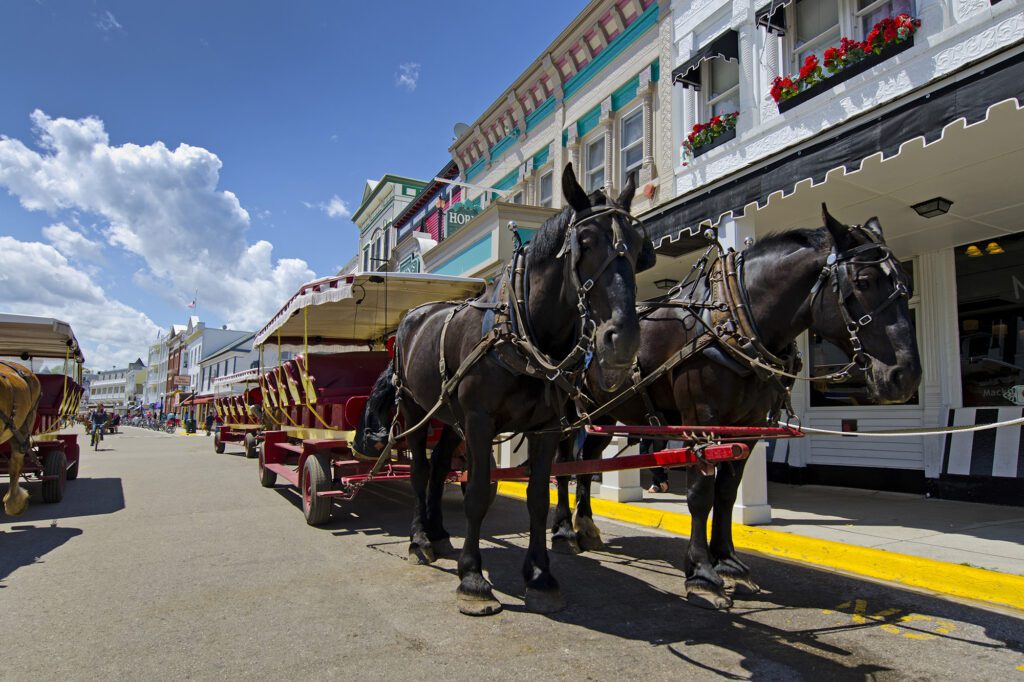
Get off the ferry from Mackinaw City or St. Ignace to Mackinac Island and the first thing you’ll see is the historic downtown area.
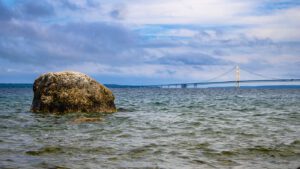
McGulpin Rock, near Mackinaw City, has been used as a navigational tool by explorers and mariners since before the Pilgrims landed.

It’s just for kids–a fishing pond in Petoskey! Kids can throw a line in this one acre pond stocked with trout.
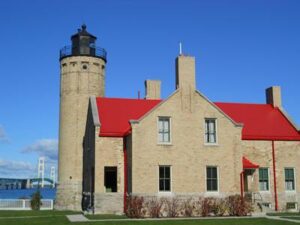
With Lake Michigan on one side and Lake Huron on the other side, Mackinaw City is a true Great Lake’s spot with lots of things to do!

Northern Michigan is home to several different museums for people of all ages which highlight the area’s businesses, history, and culture!

A visit to Northern Michigan is not complete without a walk along the Lake Michigan in search of Petoskey stones.

Get off the ferry from Mackinaw City or St. Ignace to Mackinac Island and the first thing you’ll see is the historic downtown area.